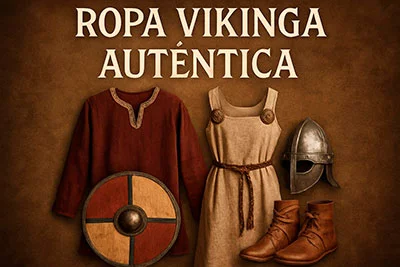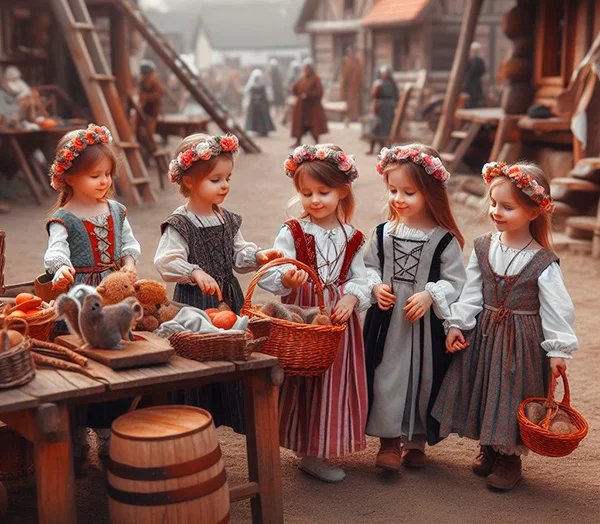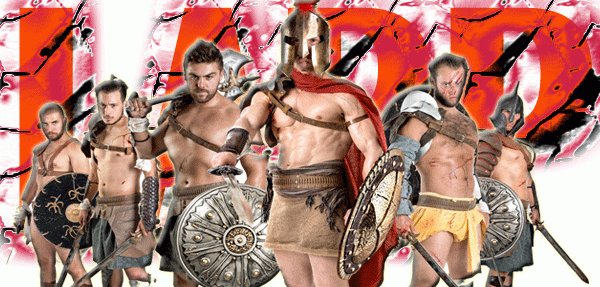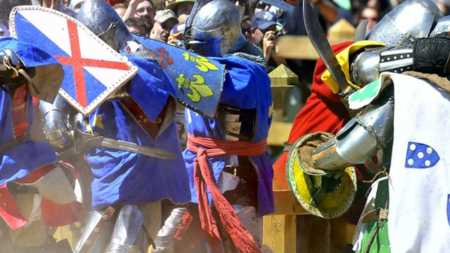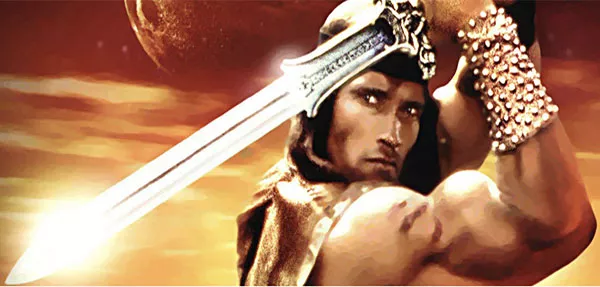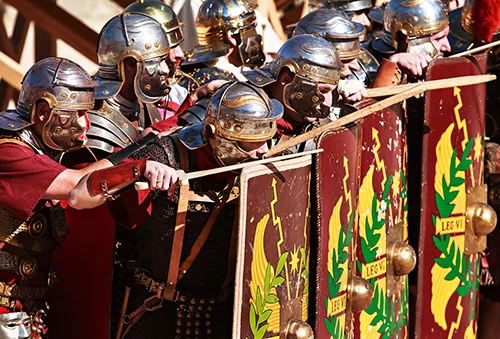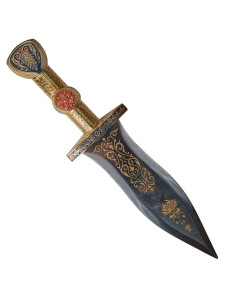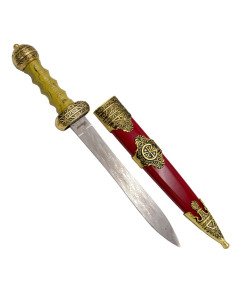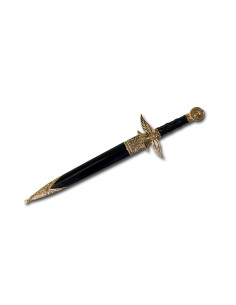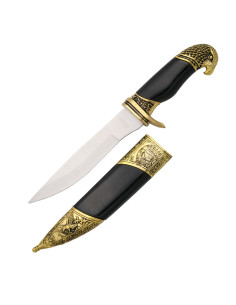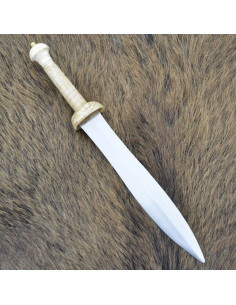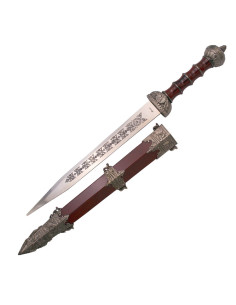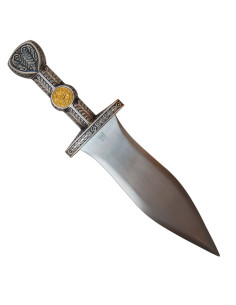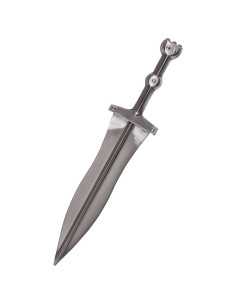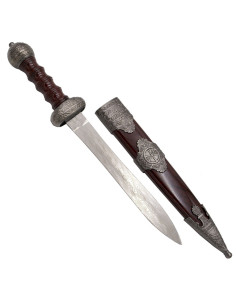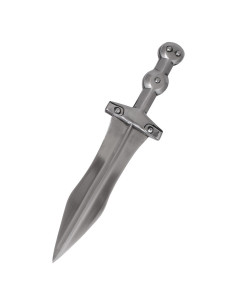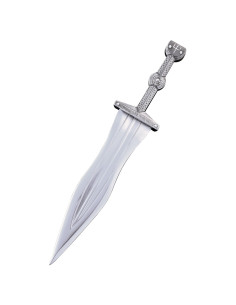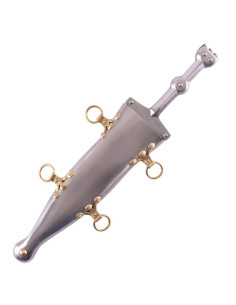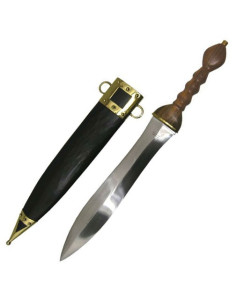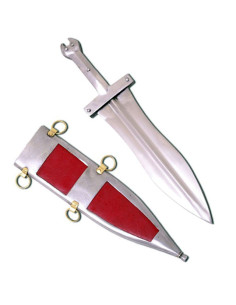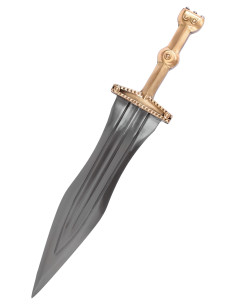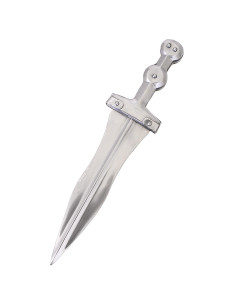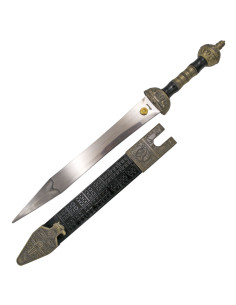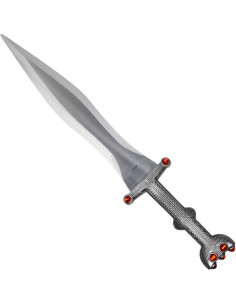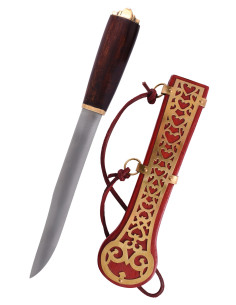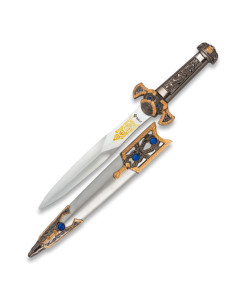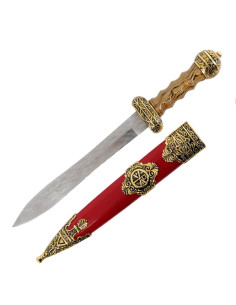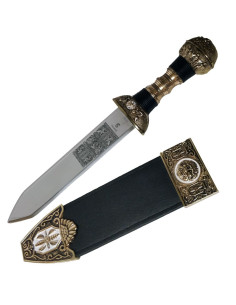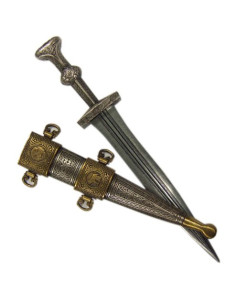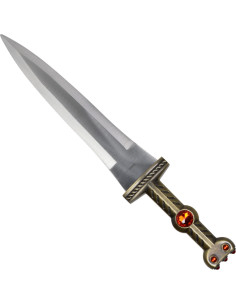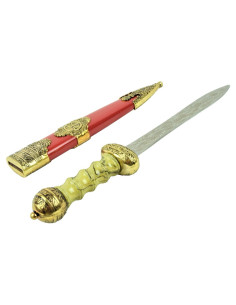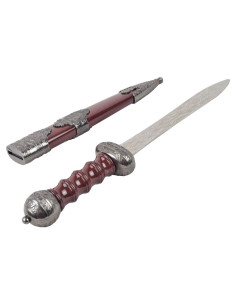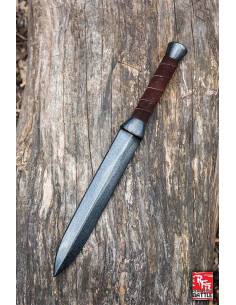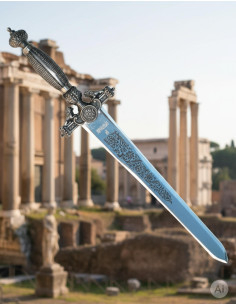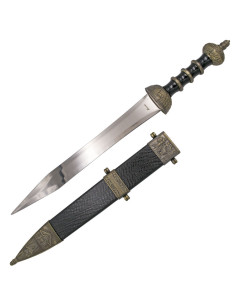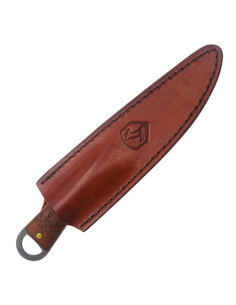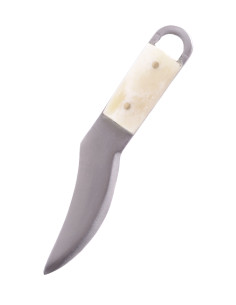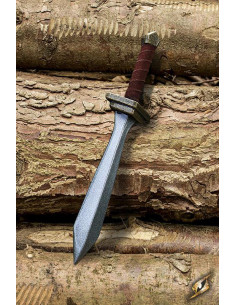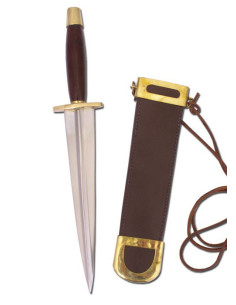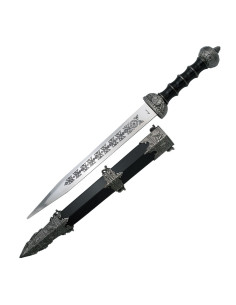Cuchillos romanos
History and Meaning of Roman Daggers
Roman daggers, historically known as pugio, were emblematic weapons during the Roman Empire era. Used both in combat and ceremonies, these daggers reflect Roman military skill and power. Each Roman dagger features a unique design that combines functionality and symbolism, representing the authority and status of its bearer.
From the time of Julius Caesar to the 1st century AD, Roman daggers evolved in shape and decoration. Models such as the Leween Roman Pugio or the Vindonissa Pugio with silver inlays are clear examples of this evolution, showcasing ornamental details that make them collectible pieces and objects of historical admiration.
Unique Design and Craftsmanship of Roman Daggers
The design of Roman daggers stands out for its balance between aesthetics and functionality. The blades, generally short and wide, are designed for close combat, while the sheaths, often decorated with silver, brass, or gold finishes, add a touch of elegance and distinction.
Specialized artisans recreate these daggers with great detail, using high-quality materials to ensure authenticity and durability. Models like the Roman Dagger with metal sheath or the decorative Roman Dagger with a golden and red cover are examples of the meticulous craftsmanship reflected in each piece, ideal for collectors and history enthusiasts.
Variety of Models and Uses of Roman Daggers
In our online store, the Roman daggers category offers a wide variety of models to suit different tastes and needs. From functional daggers like the functional Roman Pugio to decorative replicas such as the Roman decorative dagger with a wood imitation sheath, each piece has a specific purpose.
Additionally, some daggers are designed for recreational activities like LARP, with latex options that guarantee safety and realism. The diversity in size, finish, and design allows every customer to find the perfect Roman dagger, whether for display, collection, or use in historical reenactments.
Materials and Finishes in Roman Daggers
The materials used in the manufacture of Roman daggers range from traditional metals like steel and brass to special silver and gold finishes. These combinations not only ensure strength and functionality but also enhance the beauty and authenticity of each piece.
For example, the Silver Roman Dagger and the Gold Roman Dagger stand out for their shine and fine details, while models like the Roman dagger with a red sheath offer an attractive visual contrast. The choice of material directly influences the weight, durability, and historical value of the dagger, fundamental aspects for collectors and enthusiasts.
Importance of Roman Daggers in Culture and Collecting
Roman daggers are not only weapons but also cultural symbols that reflect the history and tradition of the Roman Empire. Their presence in museums and private collections highlights their value as historical and artistic pieces, appreciated for their unique design and historical relevance.
For collectors, acquiring a Roman dagger is a way to connect with the past and preserve a legacy. Our online store offers an exclusive selection that allows customers to access faithful replicas and decorative pieces, ideal for display or gifting, keeping alive the history of these fascinating weapons.
What characteristics define Roman daggers?
Roman daggers are characterized by their short and wide blade, designed for close combat. Additionally, they often feature decorated sheaths and pommels made from materials such as brass, silver, or gold finishes, giving them a unique and distinctive design within Roman weaponry.
What were Roman daggers used for in ancient times?In ancient times, Roman daggers were primarily used as secondary weapons in combat, as well as symbols of status and authority. They were carried by legionaries and officers, and sometimes had ceremonial or decorative uses.
What models of Roman daggers can I find in the online store?In our online store, we offer a wide variety of models such as the Leween Roman Pugio, the Roman Dagger with metal sheath, the Silver Roman Dagger, and latex replicas for LARP, among others. Each model stands out for its design and quality, adapting to different tastes and uses.
Are Roman daggers suitable for collectors?Yes, Roman daggers are ideal pieces for collectors due to their historical value, unique design, and artisanal quality. Our selection includes both functional and decorative replicas, perfect for display and preservation as part of a historical collection.
What materials are used in the manufacture of Roman daggers?Roman daggers are made from materials such as steel, brass, silver, and finishes in gold or nickel. These materials guarantee strength and authenticity, as well as provide aesthetic details that enhance the traditional design of these weapons.
Are there Roman daggers for recreational activities?Yes, in our online store we offer Roman daggers in latex, ideal for recreational activities like LARP. These replicas are safe and maintain a faithful design to the original, allowing you to enjoy the historical experience without risks.
How important is design in Roman daggers?The design of Roman daggers is fundamental, as it combines functionality with symbolism. The details on the blade, pommel, and sheath reflect Roman culture and the status of the bearer, making each dagger a unique and representative piece of the Roman Empire.
Discover the exclusive collection of Roman daggers in our online store. Find everything from historical replicas to decorative pieces with unique designs, perfect for collectors and enthusiasts of Roman history. Make your purchase today and bring a piece of the Roman Empire to your home!

